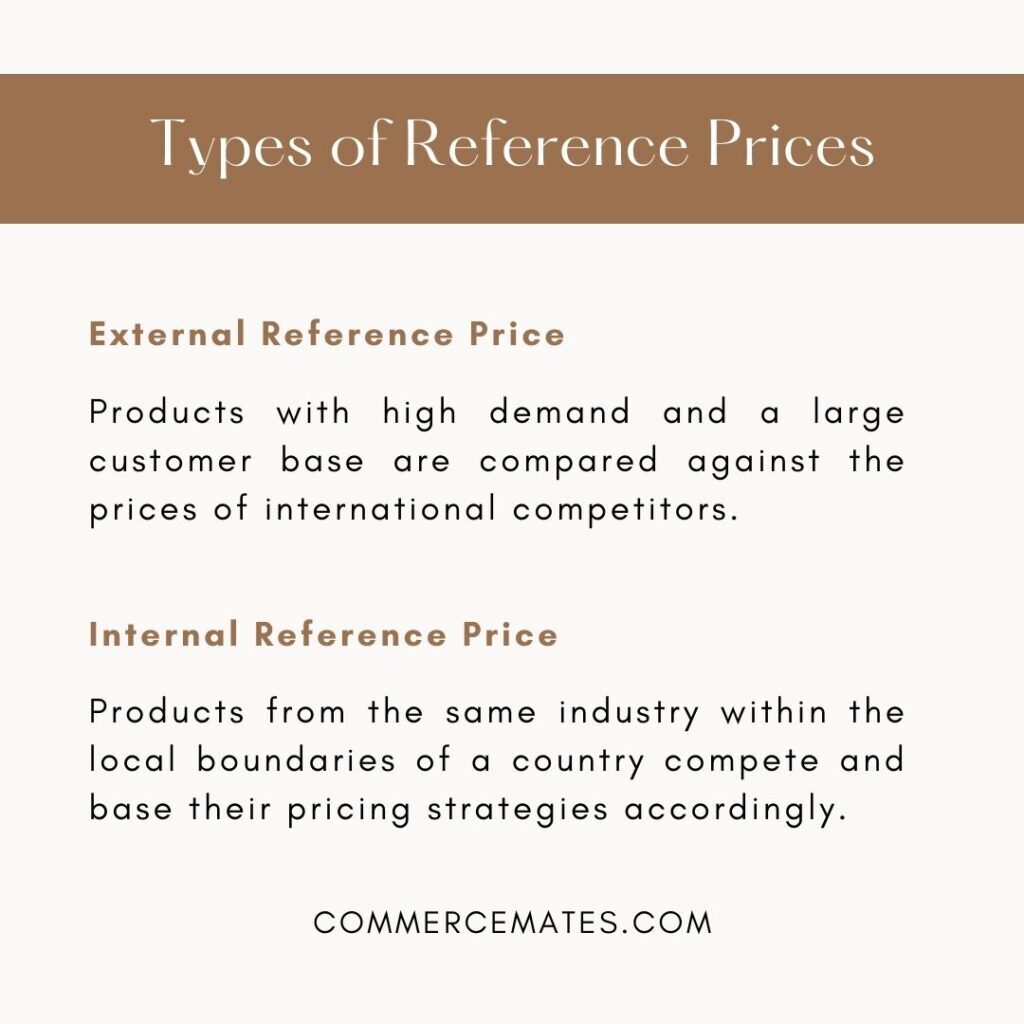Contents
Meaning of Reference Price
A reference price is a price at which the producer “intends” to sell products and services to buyers based on buyers’ past experiences.
Since it is basic consumer psychology to compare the price of the same two goods and buy the cheaper one, sellers tend to strategize their pricing in a way that buyers find their goods cheaper than their competitor’s products, and thus, they end up purchasing it. The reference price is, therefore, also called competitors price.
Before making any buying decision, consumers have an estimated price in their minds. The sellers can tap the sentiments of buyers either by
i) providing that good at a discounted rate compared to their previous selling price for example – Donuts costing $10 now $8!
ii) selling at a price lower than their competitors’ price
iii) or keeping products in descending order of their price like costly products followed by cheap products. This instantly arrests consumers’ sentiments as they are getting the same good at a price lower than the reference price (costly product’s price).
These strategies used by buyers spur their sales volume and make them super profitable.
Examples of Reference Price
Let’s elaborate on the above 3 strategies with examples:
Case 1
Many times, you visit the departmental store and find that the tetra pack of juice that cost $20 in the market costs $18 here or costs $30 for 2 tetra packs.
You also see a big whiteboard scribbled with “save $2” or “buy 1 get 1 free”, thereby inviting purchases.
Case 2
Suppose you do online shopping for books and see that a novel that costs $25 on the website is available for $20 on another website. Also, you often come across instances where a pack of 3 books costs only $50 whereas, one single book of that alone costs as high as $35. This way you can draw a comparison and buy the book keeping in mind the reference (or competitor’s) price.
Case 3
When you visit the nachos section of the departmental store, you must have noticed that the expensive family packs are kept on high and medium racks whereas single or cheaper packs are on the corner and lower ones. This is done to capture consumer psychology of “not minding” to pay a little extra for something they like.
This way, sellers can trap masses of buyers and make heavy revenue.
Similarly, the packs of nachos are kept in descending order of price on the same rack so that consumers satisfy themselves by buying less expensive ones!
Types of Reference Prices
The concept of reference price is not only limited to one department, product, or place.
There are two types of reference prices:
i) External Reference Price
ii) Internal Reference Price

External Reference Price
When producers compete and price their products based on their substitutes in the international market, it is called External reference price. This is especially seen in those products which have both domestic and international customer bases as well as high demand.
For example, Mars, a US chocolate, is a well-known chocolate brand costing $3 (changes as per quantity). It is a bar of tasty dark chocolate with dry fruits and multiple choco-layers embedded in it.
Its competitor like Toblerone, the most loved chocolate in Switzerland, has similar taste and components but with lower pricing (~$2.5). Thus, its target consumers can have Mars as their reference price and choose to buy Toblerone over it.
Internal Reference Price
The market growth is a result of competition amongst industries in the same sector. One of the main factors which distinguish one industry from another is its pricing policy. New industries use the concept of internal reference price and then price their products lower than their competitors which is easy prey to acquire customers.
Therefore, internal reference price refers to the price where producers compete and price their products based on their substitutes in the domestic market.
For example: Again, the cost of Mars is $3 and another most popular chocolate in the US named Hershey’s costs ~$1.
Since they both share similar tastes in terms of sugar content, darkness, and choco richness, the consumer would not be interested in paying more and thus, choose Hershey’s over Mars.
Importance of Reference Price
As already stated, reference price plays a very important role in decision-making.
It is a beneficial tool for both producers and consumers.
Producers can set high prices in the first place and then provide discounts against their competitors, thereby trapping customers.
Similarly, consumers can compare and choose amongst various options available and buy the best product at the least cost.
Where reference price has monetary importance for producers, it has psychological benefits for consumers!